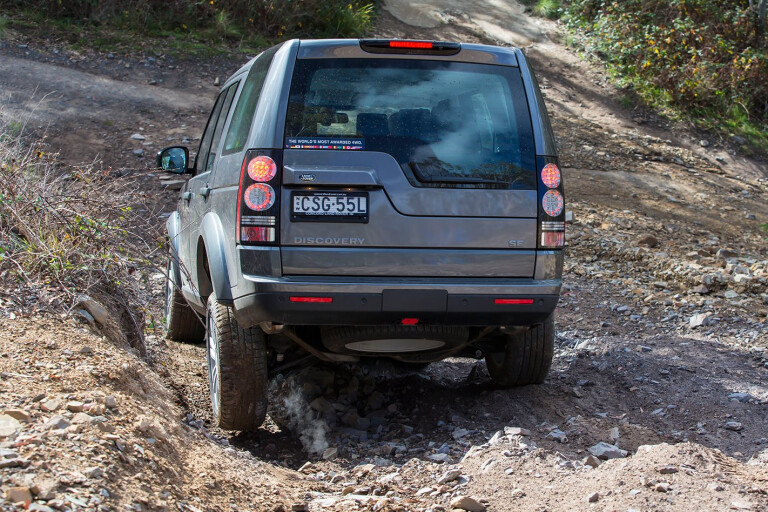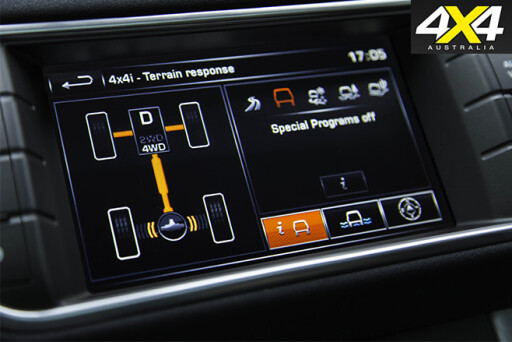
You’ve no doubt heard of electronic traction control and electronic stability control, which is now mandatory on all new passenger cars, including 4x4s, sold in Australia.
But how do the two work and how do they differ? And do they really help in a 4x4? Is this the nanny state taking over?
Electronic traction control (ETC) and electronic stability control (ESC) are related both in design and operation, but do two entirely different things. Of the two, ETC is the simpler of these systems; it simply limits wheelspin.
ETC uses the same hardware as anti-lock, or so-called ABS brakes, but employs different software. Where ABS releases the brake on a locked wheel, ETC brakes a spinning wheel.
ETC in a 4x4 does its best work in situations when your 4x4 runs out of suspension travel on very rutted or uneven ground, leaving a wheel, or often two diagonally opposite wheels, dangling in the air. With a standard open differential this means the power will direct down the path of least resistance and be wasted spinning the wheel(s) without any purchase on mother earth, which means you go nowhere.
What ETC does is apply the brake on the spinning wheel(s) and thereby cause the differential to direct the power towards a wheel(s) with the better traction. All being well, your vehicle moves forward.
ETC effectively gives you a limited-slip differential at both ends of your 4x4 and is great help off-road. Just how good it is depends on the tuning of the ETC software and terrain being traversed. ETC that works well on a broken, rocky climb may not necessarily work well on soft sand or in mud. Some systems are better on differing surfaces than others.
Electronic Stability Control (ESC) is a different thing altogether. Introduced in 1995 by Mercedes-Benz, but developed by German component supplier Bosch, ESC is designed to help on-road by preventing skidding on slippery surfaces such as rain-affected bitumen or loose gravel.
ESC goes under a host of manufacturer-specific trade names such as Vehicle Stability Control (Toyota), Dynamic Stability Control (Land Rover, BMW and others) and Electronic Stability Program (various including Mercedes).
 ESC uses info from a host of sensors to compare the path the vehicle is following with the path intended by the driver. If the two don’t correspond and the vehicle is starting to head in a direction other than the driver is attempting to steer the car – in other words the vehicle is starting to get out of control – the system will intervene by applying one or more of the brakes and/or cutting the engine power to help the driver regain control.
ESC uses info from a host of sensors to compare the path the vehicle is following with the path intended by the driver. If the two don’t correspond and the vehicle is starting to head in a direction other than the driver is attempting to steer the car – in other words the vehicle is starting to get out of control – the system will intervene by applying one or more of the brakes and/or cutting the engine power to help the driver regain control.
ESC reacts very quickly and will intervene before the driver usually knows something is astray. It has proven to be very effective in crash mitigation. It can’t, however, change the laws of physics and doesn’t mean you can corner faster.
There is also a major problem with ESC when off-road. In soft sand or deep mud, for example, where you can often be steering in one direction while your 4x4 is heading in another altogether, ESC is readily confused and will apply the brakes, or cut the engine power, or both. That’s definitely not what you want if you are driving on soft sand or deep mud.
Even on gravel roads ESC can cut the power when you don’t want it to, especially if the threshold of how much drift the system will tolerate is set too low.
Thankfully for sand and mud driving, most 4x4s have an ESC off switch that, at the very least, will desensitise the ESC – if not disable it all together. Some of these switches are two-stage where the effect of ESC is first reduced and then, by holding the switch down longer, completely disabled. Selecting low-range also automatically disables ESC on most 4x4s.
This issue of ETC being good for off-roading, if calibrated right – but ESC generally being a nuisance – was first addressed by Land Rover with its clever but still-evolving Terrain Response system that debuted in the Discovery 3 a decade ago. It integrated both ETC and ESC in driver-selectable terrain-specific programs that also worked with the suspension, and locking centre and rear differentials.

COMMENTS